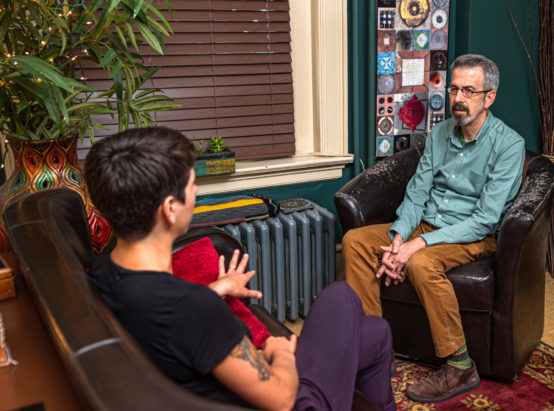
This post is the 3rd post in my blog series Five Key Factors of How Therapy Helps.
People who have not been in therapy before naturally wonder, “What goes on in therapy?” I try to put clients at ease to feel safe enough to talk freely about their thoughts and feelings. I hope to create an environment where clients can let down their guard. If we hit it off, the therapeutic relationship acts as a staging ground for the client to try different ways to be and act–a crucial factor of what goes on in therapy. When I emotionally attune with the client, I can sense when to be receptive (listening and asking for clarification). Alternately, I can sense when to be active (offering suggestions or pointing out things that may be hard to hear). My clients who have had previous therapy where the therapist listened but gave little feedback tell me that they like my active engagement. I think that over the years, I’ve found a good balance between being active and receptive. This balance is key in how therapy can help.
The feelings between a therapist and their client also play an essential role in therapy. For example, the client may subconsciously transfer feelings about their father or boss to me and see me as disapproving or alternately as wise.
Transference is actually expected and plays a vital role in how therapy can help. Let’s imagine, for example, that I say something to a client that offends him. We can explore whether or not his reaction was proportional to what I said. Overreactions are clues that it may be a transference of, say, his critical father. If not, I apologize. If the client recognizes it as a transference, we can work through feelings, and I can help him see that sometimes when he feels criticized by his boss, he may be transferring his feelings about his father to his boss. Other times the client may have strong feelings of warmth and safety. He may feel that the therapist feels kindness and respect toward him. Often this is accurate. At moments like that, I may help the client to feel compassion and respect toward themselves.
With a skilled therapist, the client can even become temporarily dependent on the therapist’s warm regard. The therapist can then work to help him recognize his competence for doing this independently. As a fellow human, I can help him feel less isolated by showing that I and others share similar problems. This feeling of shared experience is significant when the client is weighed down with something he feels is shameful. Shame creates the feeling that if others knew about it, one would be viewed with disgust. The impulse is to disappear. It is often a decisive moment when the client dares to share something he is ashamed of, and the therapist accepts him without pause.